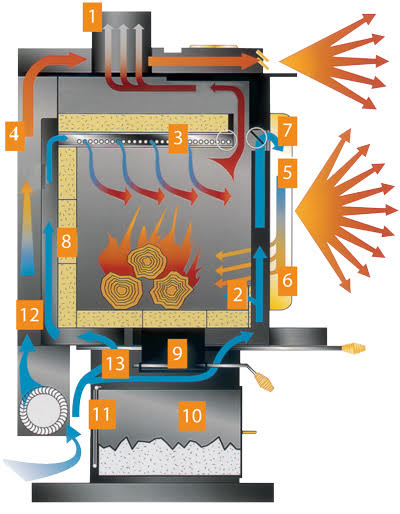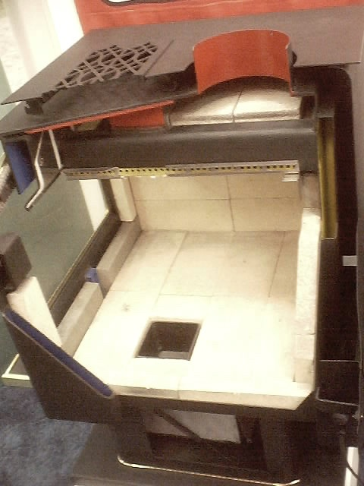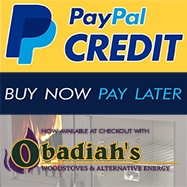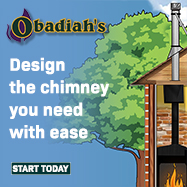Six things to Ask Yourself When Comparing a Traditional Indoor and Outdoor Boiler
Are you thinking about a traditional boiler, but are not sure if you want it indoors or outdoors? This is an important decision, and over the years Obadiah's has helped many customers decide what is best for their household or business. To get you started, here are six things to ask yourself when comparing a traditional indoor and outdoor boiler.
1. Is the system a closed system or an open system?
Advantages of a closed system
No oxygen can get into the water, thereby eliminating the possibility of corrosion through oxidation (rust). There's no need to keep the outdoor boiler water separate from the indoor system, which eliminates the extra expense and inefficiency of a plate exchanger. A closed system also does not need as big of a circulator because of the pressure in the system, has a much longer life span without needing to treat the boiler's water, and there's no need to keep the system re-supplied with water.
Advantages of an open system
If boiling occurs in the boiler, the water just steams off and is less likely to rupture plastic underground piping. All closed systems, however, require a pressure relief valve that will explode if the boiler pressure gets too high. Water temperature also can’t get as high as with a closed system, which could be an advantage or a disadvantage depending on the application. Greenhouses, livestock buildings, and lumber kilns all require high water temperature for effective heating.
2. What is the efficiency rating?
Combustion efficiency should be nearly 100%
Combustion efficiency can be ascertained by ash content, creosote build-up, and smoke. If there is no smoke, very little ash, and little creosote deposits, the fire is burning at peak efficiency. In a solid fuel boiler, this is accomplished by proper amounts of combustion air injected into the firebox at the right spots. However, quality of wood will also affect the ash content and smoke level. Wood that is half rotten or has a lot of bark on it makes more ashes and smoke than good, quality firewood. A forced draft is usually necessary for proper fuel combustion, and a hot fire is also necessary for good combustion efficiency. When a solid burns, it goes through a chemical reaction that breaks it down into a liquid, a gas, and a solid. In wood, the liquid is the tar (creosote), the gas is wood gas, and the solid is charcoal. The creosote and gas leave the charcoal at the same time and produce the smoke. If the fire is a “cold” fire, the creosote will separate from the wood gas and condense as a tarry substance either in the chimney or in the boiler. This happens when there isn’t sufficient oxygen to burn the gases and produce a hot fire, which leads to smoldering, and will produce un-burnt smoke and creosote. Keep in mind that creosote is not a good thing to have to deal with, even if it is only in the stove and not in the chimney. Aside from the fact that it's a fire hazard, creosote is acidic and will cause corrosion, as well as retard heat transfer.
Heating efficiency should be above 85%
There must be sufficient heat exchange area to transfer all the heat from the fire into the water. In a hot fire, this is mostly accomplished through a multi-pass heat exchanger. This means that the heat from the fire is forced to pass through a set of tubes, fins, or a bank of water pipes. A rule of thumb is that the bigger the firebox is the more tubes, fins, or pipes are necessary. If the boiler has water around the firebox, this is considered the first heat exchange pass. If it does not, the heat must make several passes through tubes, fins, or pipe banks before exiting through the chimney.
A clean heat exchanger is also necessary for efficient transfer of heat, and it is important to discover what fuel was used to determine the efficiency rating of the boiler. If wood was used, the rating is only a best guess. The reason for this is that to get an efficiency rating, there must be a known input BTU to receive an output BTU. The difference between these numbers is the efficiency rating. Wood does not provide a reliable input BTU because of the great variation in wood (type, moisture content, forest or fence row tree, kiln dried or air cured, etc.). Charts are available, but they are inaccurate. Heating efficiency can only be accurately rated using a fuel like oil, propane, natural gas, or coal.
3. What kind of Firebox?
Size
The firebox should be big enough to last for ten to twelve hours, but not so big that it can last for a couple of days. Oversized fireboxes result in smoldering, inefficient, smoky fires. They use more wood because the heating value from the burning gases is not available. When burnt hot, the stack temperature on these boilers can reach dangerous levels.
Type
The best firebox is the one with water around it, as this provides the best heat exchange. Some fireboxes are lined with refractory, a design to make a hot fire with hot firebrick. This is a great idea for burning wood, but not for burning coal. And even though this works relatively well for wood, there are still some drawbacks: One is that the refractory is not very impact-resistant. Because of the high temperatures in the firebox, reloading often requires throwing the firewood in, hitting the refractory and causing it to fall apart over time. The refractory also protects the boiler shell, so when it begins to crack and come apart, the shell is in jeopardy of being exposed to temperatures it wasn’t made for. In this type of firebox, there is more residual heat that the water needs to absorb, thereby requiring more water capacity, which will increase the size and weight of the boiler.
4. How much water capacity?
There should be sufficient water capacity in the boiler to absorb the heat that is still being emitted from the fire after the draft has shut down. Too much water (high mass) is not good, because it has a cooling effect on the fire and creates a demand lag. In burning wood or coal, low mass (too little water) is not a good idea either; this will introduce thermal shock to the boiler and significantly shorten its life. There also usually isn’t sufficient water to absorb the residual heat in the firebox, which often leads to boiling and other associated problems.
Many of the "gasification" boilers today are actually "batch burners" that require water storage to work properly because they do not idle. They burn at a high temperature, non-stop, until they run out of fuel- storing the BTUs in the hot water which boils at 212 degrees. For more on batch burners, see this post: The Problems with European-Style Batch Burner Boilers.
5. What type of construction?
Steel
Boiler plate is the industry standard for all pressurized heating systems. Boiler plate steel is carbon steel of a grade and specification approved by the ASME Boiler and Pressure Vessel Code. If the boiler is a closed system, it must have been tested by the manufacturer to sixty PSI. If the boiler is an open system, there can be no pressure checks because the steel will not handle pressure. The boiler should be made out of .25" thick material for the water jacket, and should not have places where there is steel that could get hotter than the temperature of the steel it is welded to. An exception would be a fin type secondary heat exchanger, but even in that case, there should be expansion joints in the fins and they should not be in the firebox. Failure to abide by these principles will result in cracking and premature failure of the heating unit.
Stainless Steel
Some companies are now touting the benefits of stainless steel in boiler construction, but this is misleading. The only benefit of stainless steel is anti-corrosion, which could also be corrected by changing to a closed system. Stainless steel cracks easily (resulting in water leaks) when exposed to high heat and the heat exchange rate is slower for stainless steel than for mild steel. This results in reduced efficiency. Grades of stainless to steer clear of are 304 and 316. If the boiler is made from 409 stainless, there is a possibility that it will work, but you must bear in mind that 409 is a poor grade and does corrode. The extra expense is often not worth it.
6. What type of gasification?
Gasification boilers are being touted as the route to take for high efficiency. However, keep in mind that there is high combustion efficiency and high heating efficiency. Make sure the heating efficiency is as high as the combustion efficiency. The best gasification boilers are the ones that burn the gases inside the firebox and not in a separate gasification chamber. “Upside down burn” gasification boilers have stringent requirements for quality and moisture of wood to the point that sometimes the wood has to be purchased just to pass. These boilers can also be hard to start and, during periods of low demand, the gasification chamber can cool down to the point that when the fire tries to restart there is not enough heat left to ignite the gases. As a result, in many cases the firebox gets very heavily tarred with creosote, which becomes corrosive and shortens the life of the boiler.
Firebox gas combustion boilers are usually more forgiving and offer more fuel options. This technology is also widely used today in all EPA-rated woodstoves, which produce very little particulate without relying on computers, sensors, or combustion blowers to burn very clean and efficiently. By simply using the draft from the chimney, which is essentially a vacuum, combustion air is drawn into various locations in the combustion chamber to achieve maximum combustion efficiency.
Below is a cross sectional view of Napoleon Woodstove's design called the "Twin Vortex EPA Engine", which will help you understand the principle used in the EPA combustion chambers.


Further Reading:
The Key To Burning Wood Cleanly and Efficiently
The Problems with European-Style Batch Burner Boilers
If you want to find even more info on wood heating, check out my blog at Obadiah's Woodstoves, where I will be adding new articles as time allows.
Posted on Saturday, June 6, 2015






